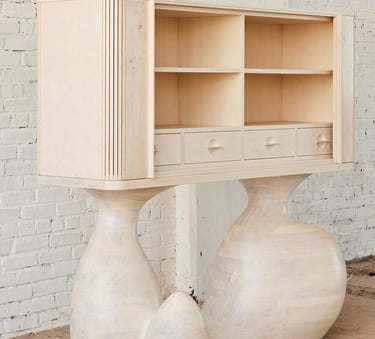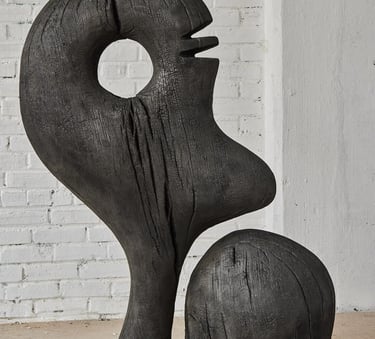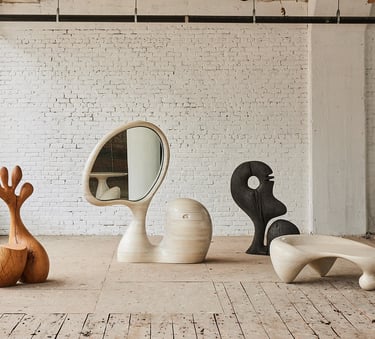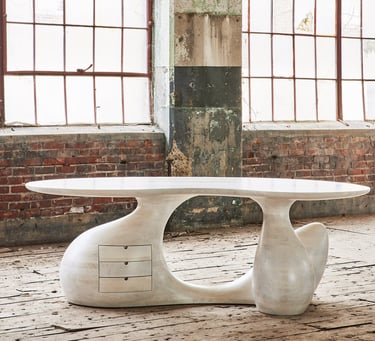Sculptural Furniture: When Art Becomes Part of Your Home and Life
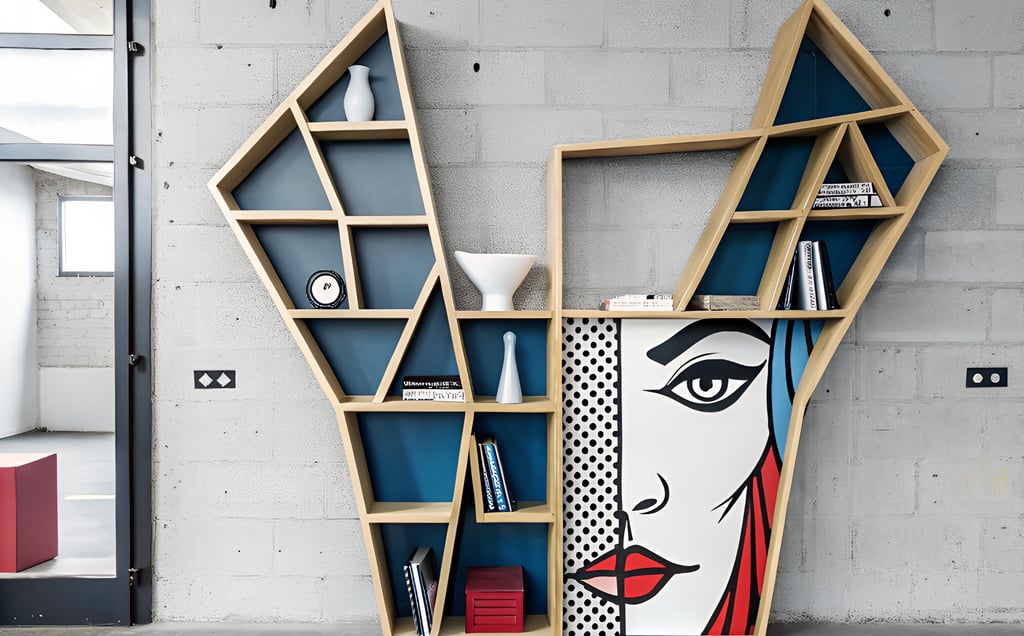

Understanding Sculptural Furniture
Sculptural furniture represents a unique intersection of artistic expression and functional design, distinguishing itself from traditional furniture by prioritizing aesthetic appeal alongside usability. While conventional furniture is primarily designed with practicality in mind, sculptural furniture emphasizes artistic form, transforming functional items into captivating works of art. This genre encompasses a variety of furniture pieces, including chairs, tables, and storage options, each reimagined through the lens of creativity and innovation.
The essence of sculptural furniture lies in its ability to captivate the viewer through striking shapes, innovative materials, and dynamic configurations. Designers often draw inspiration from various art movements, injecting unconventional elements that challenge standard perceptions of furniture. For instance, the fluidity of organic forms may contrast sharply with the rigid geometry typical of traditional pieces. This exploration of form creates a dialogue between art and everyday life, encouraging individuals to engage with their living spaces in a more profound manner.
Historically, sculptural furniture has evolved significantly, with roots tracing back to the early 20th century. Influential movements such as Modernism and Postmodernism paved the way for designers to experiment with materials and shapes, leading to the development of iconic pieces. Visionaries like Charles and Ray Eames, as well as Isamu Noguchi, have been pivotal in establishing this art form, pushing boundaries and redefining what furniture can represent. Over the decades, sculptural furniture has continued to adapt, reflecting contemporary trends and societal changes while maintaining its fundamental characteristic of merging function with artistic intention.
In essence, sculptural furniture serves as a testament to the limitless possibilities inherent in design, showcasing how artistic concepts can seamlessly integrate into the fabric of our daily lives.
The Role of Sculptural Furniture in Interior Design
Sculptural furniture serves as a transformative element in interior design, elevating spaces beyond mere functionality to a realm of aesthetic expression. These artistic pieces not only fulfill utilitarian purposes but also contribute significantly to the overall atmosphere of a room. By incorporating sculptural furniture into your home, you can create a unique focal point that draws the eye and sparks conversation. The interplay between functionality and artistic design becomes crucial in establishing harmony within a living space.
Incorporating sculptural furniture into various design styles requires an understanding of the existing aesthetics of the space. For modern interiors, consider sleek pieces with minimal ornamentation and organic shapes that complement clean lines. A sculptural coffee table made of glass or metal can add depth without overwhelming the room, enhancing the minimalist appeal. In more eclectic designs, bold and creative sculptural pieces can be effectively integrated. Items such as a whimsically shaped armchair or an abstract side table can serve as statement pieces, invigorating the overall design and encouraging a mix of textures and colors.
For those leaning towards a minimalist approach, balance is essential. Sculptural furniture should enhance, rather than dominate, the space. When selecting these artistic elements, opt for designs that resonate with the fundamental colors and materials used throughout the room. This cohesion ensures that each piece contributes to a unified look while still standing out on its own. In conclusion, finding the right balance between functional furniture and sculptural artistry allows for the creation of engaging, cohesive living spaces that reflect personal style and foster an inviting atmosphere.
Choosing the Right Sculptural Furniture for Your Home
Selecting the right sculptural furniture involves careful consideration of various factors that can significantly influence the overall aesthetics and functionality of your space. One of the primary elements to assess is the scale of the furniture in relation to the dimensions of the room. Oversized pieces can dominate a small area, making it feel cramped, while smaller items may be lost in expansive spaces. Ensuring proper proportion and balance is essential to achieving harmony in your living environment.
Next, the material of the sculptural furniture plays a crucial role in both appearance and durability. From wood and metal to glass and fabric, each material presents its unique characteristics. For instance, a wooden piece can add warmth and a natural element, while metal may introduce a modern or industrial vibe. Understanding how these materials interact with your existing decor can aid in selecting pieces that not only stand out but also complement your personal style.
Color is another vital consideration in choosing sculptural furniture. The right hue can enhance the mood of your space or provide a bold statement amidst neutral tones. When incorporating color, consider the existing palette of your home to ensure cohesiveness or to create intentional contrasts that draw the eye. A carefully chosen color can transform an ordinary room into a dynamic space that reflects your personality.
Sourcing unique sculptural furniture is an exciting journey. Renowned designers and artisan galleries often showcase distinct creations that can serve as focal points within your home. Additionally, numerous online platforms offer a vast selection of sculptural items, allowing you to explore various styles and find pieces that resonate with your taste. By investigating these avenues, you can discover furniture that not only fulfills functional needs but also expresses your individual aesthetic vision.
Preserving and Caring for Sculptural Furniture
Maintaining the integrity of sculptural furniture is essential for ensuring its longevity and preserving its artistic value. These unique pieces, which blend functionality with artistic expression, require specific care to retain their beauty and structural soundness. Firstly, regular cleaning is crucial. It is advisable to use a soft, lint-free cloth to gently dust the surface, avoiding any abrasive materials that could scratch the finish. For pieces with intricate designs, a soft-bristle brush can help reach deeper crevices without causing damage. Periodic cleaning with a suitable cleaner, depending on the material—such as wood, metal, or acrylic—can remove accumulated grime and restore luster.
Protecting the finish of sculptural furniture is another important aspect of preservation. Applying a suitable wax or polish can enhance the surface while providing a protective barrier against moisture and dirt. Moreover, it is essential to be mindful of the placement of these art pieces. Positioning sculptural furniture away from direct sunlight can help prevent fading and damage caused by UV rays. Excessive humidity or dry air can also adversely affect materials, leading to warping or cracking. Maintaining a stable environment with regulated temperature and humidity levels will significantly enhance their lifespan.
Moreover, avoiding areas prone to high foot traffic or potential hazards can minimize risks of damage. Using coasters or protective pads under heavy objects can also aid in preventing scratches and dents. Finally, whenever mobility or relocation is necessary, careful handling is paramount. Lifting rather than dragging the furniture will prevent undue stress on joints and seams. By adhering to these guidelines, one can ensure that sculptural furniture remains a functional yet stunning enhancement to any living space for years to come.
